We spent three days and two nights in the city of Samarkand sightseeing. The following is a summary of the main attractions in the Old City.
- About Samarkand
- Registan Square
- Ulugh Bek Madrassah
- Sherdor Madrassah
- Tilla-Kari Madrassah
- Chorsu
- Amir Temur Mausoleum Gur-i Amir Сomplex
- Rukhobod Mausoleum
- Aksaray Mausoleum
- Bibi-Khanym Mosque
- Siyob bazaar (Siyob bozor)
- Hazrat Khizr Mosque
- Shah-i-Zinda Mausoleum complex
- Amir Temur Monument
- St. Alexsey church
- Roman Catholic Parish of St. John the Baptist
- Armenian Apostolic Church
- Accommodation in Samarkand
- Dining in Samarkand
About Samarkand
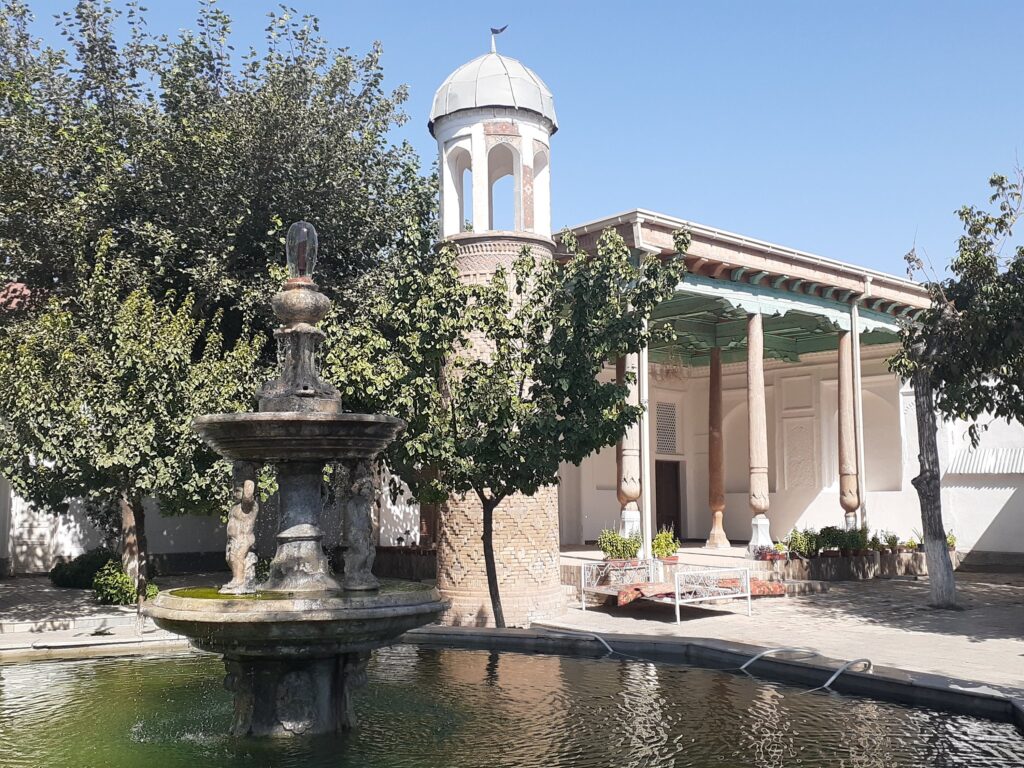
Samarkand is a city in eastern Uzbekistan with a population of approximately 520,000 (2016). It has flourished as an oasis city on the Silk Road. It is also the birthplace of Islam Karimov, the first President of Uzbekistan.
The main tourist attractions are concentrated in the old town, with many accommodation options in the vicinity. The city can be walked around, but there are many sights to see, so you should take your time to explore the city.
Registan Square
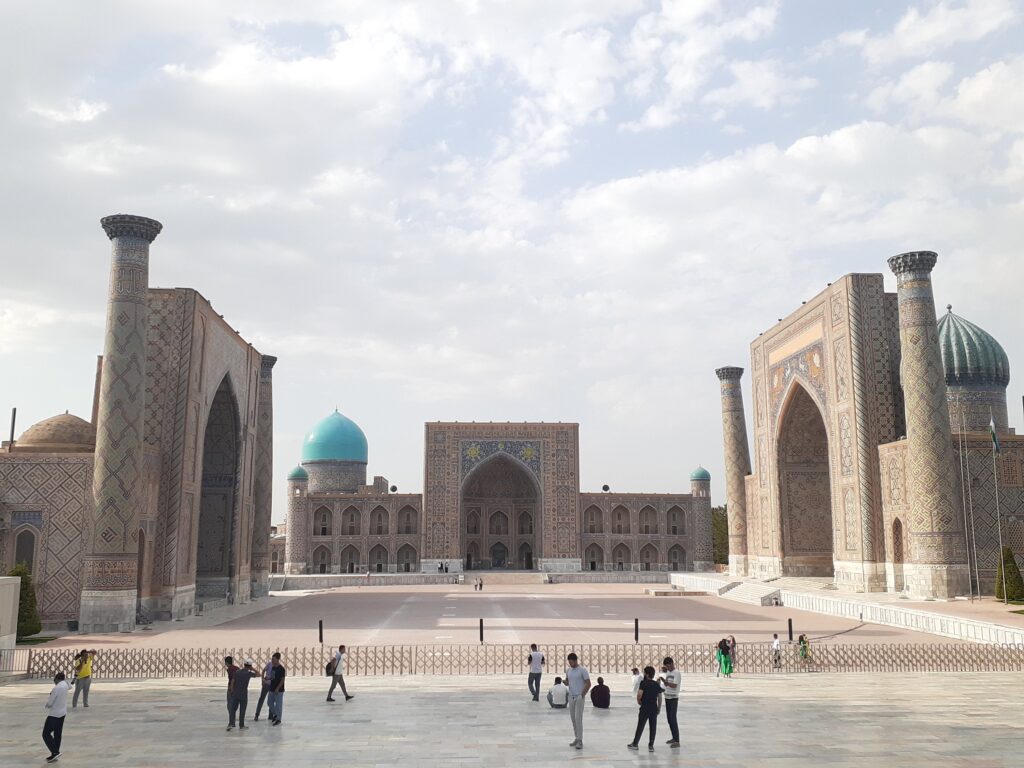
Surrounded on three sides by madrasas, this square was inscribed as a UNESCO World Heritage Site in 2001. The word ‘Registan’ means ‘sandpit’ in Uzbek, and before the surrounding buildings were built, the square was covered with sand. It was where the rulers of the time gave orders and held ceremonies. It has served as the city centre of Samarkand.
The first madrassah, the Ulugh Bek Madrassah, was built on this square in the 15th century. Samarkand flourished as an ancient oasis city on the Silk Road, but from the end of the 17th century it began to decline and its magnificent madrassahs fell into disrepair. Furthermore, under Soviet rule, it was stripped of its role as an Islamic seminary. However, it was during the Soviet era that restoration of the building as a historical monument began.
The imposing Madrasah faces in different directions, so it can be visited at any time of the day to admire its beauty. There is an entrance fee of 50,000 som per foreigner to enter the square, but it is free to take photos from outside the fence.
Ulugh Bek Madrassah

The first madrassah in Legistan Square, built between 1417 and 1420 by the mathematician and astronomer Ulugh Bek. The facade is flanked on both sides by minarets. The gate has a decagonal star, which symbolises the sky and astronomy.
As it is built on the western side of the square and the facade faces east, it is best to photograph it in the morning.
Sherdor Madrassah
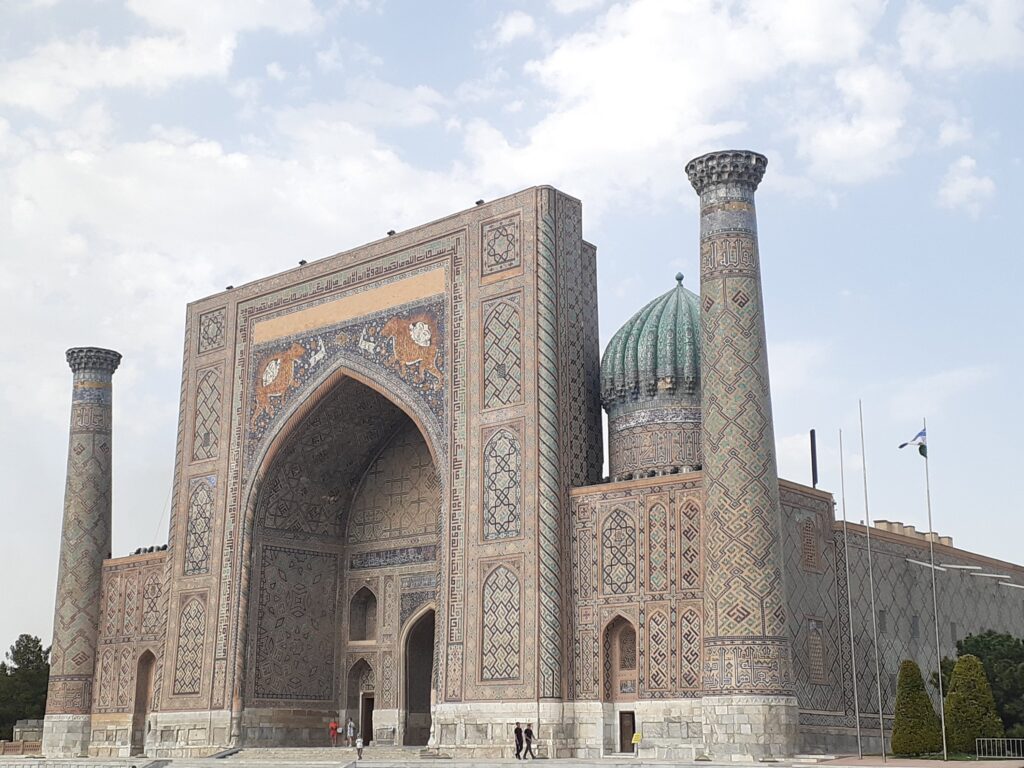
Built over the years from 1612 to 1636 by Yarantush Bahadur, then Emir of Samarkand. The madrassah was built in mirror symmetry with the Ulugbek madrassah and was designed to be as large and luxurious as the first madrassah.
The name ‘Shah’ means ‘tiger’ or ‘lion’ and ‘Shah Dhol’ means ‘decorated with tigers’. This is due to the tiger on the upper part of the façade.
Located on the eastern side of the square and built facing west, it is best photographed in the afternoon. The blue dome with its wavy shape is also characteristically beautiful.
Tilla-Kari Madrassah
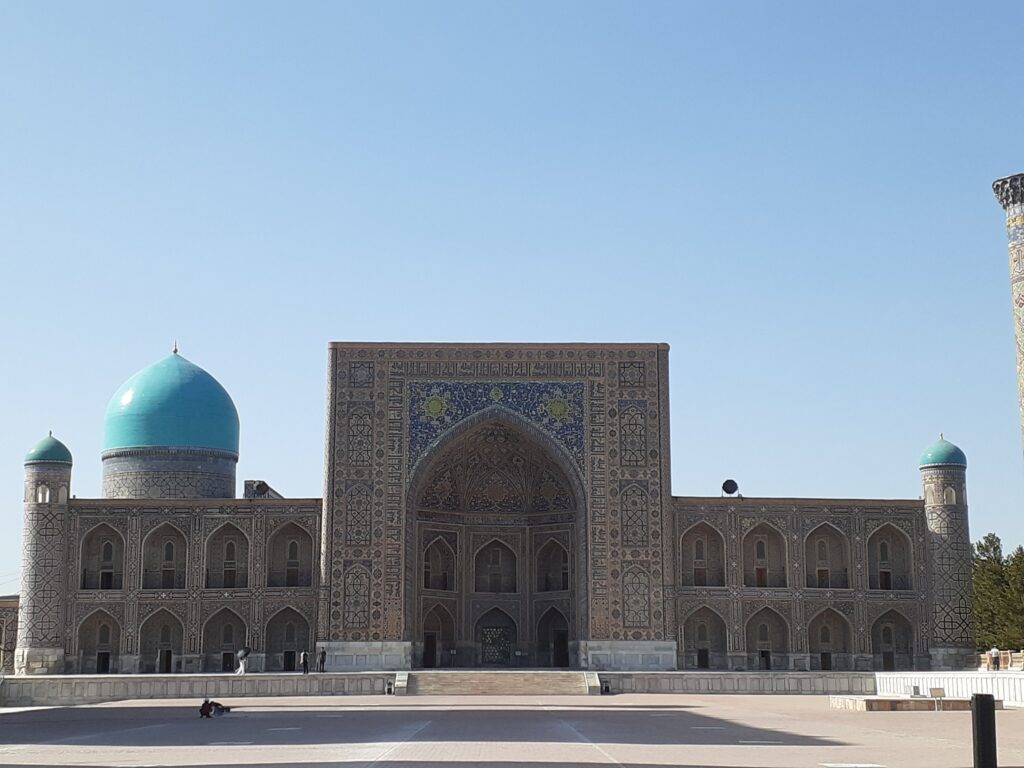
The name ‘Tilla-Kari’ means ‘gilded decoration’. It was completed in 1660 after 14 years of work by Yarangtush Bahadur, who built the Shah Dor Madrassah.
It harmonises well with the two madrasas built earlier and enlivens the square. Minarets are placed on the left and right and a blue dome on the left.
Chorsu

Chorsu, which used to be a market, was built in the 15th century. It consists of a large central dome surrounded by six smaller domes. Chorsu means ‘crossroads’ in Persian and was built at the junction of roads connecting Samarkand with Tashkent, Bukhara and Shahrisabz.
The market here has been moved to the Shiyob Bazaar, and Chorsu is now an art gallery, displaying artworks. It is a beautiful building with a rich history, although it is more subdued than the glamorous madrasahs.
Amir Temur Mausoleum Gur-i Amir Сomplex
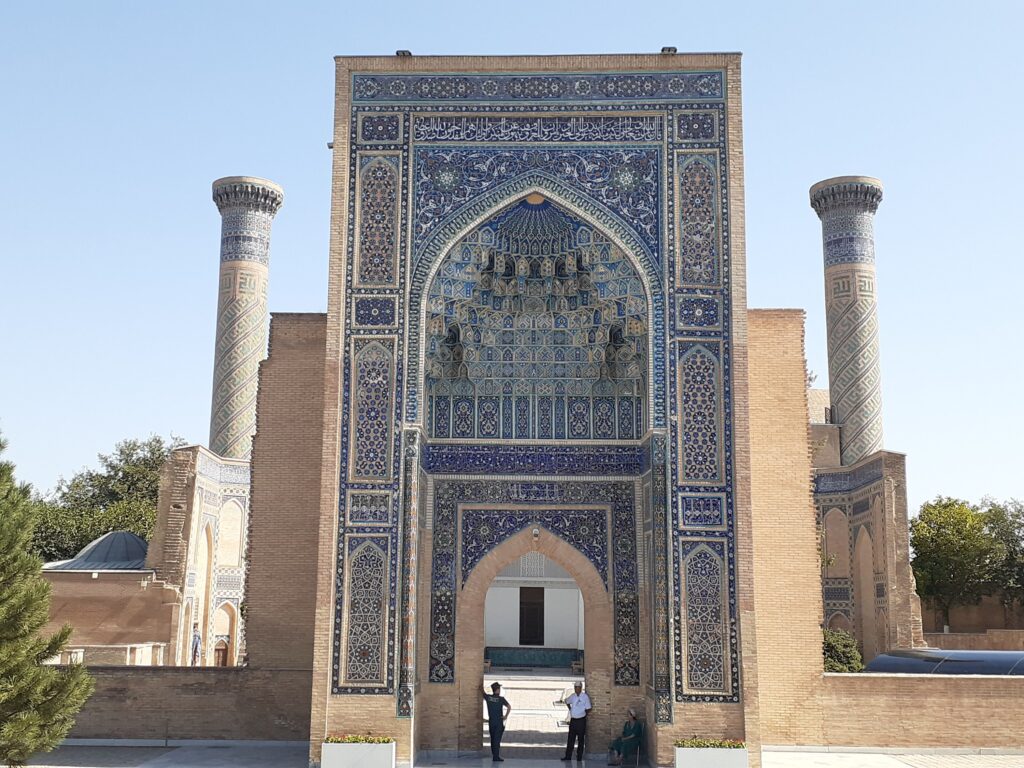
This mausoleum, built in 1403-1404, is said to be the pinnacle of Timurid architecture, where Timur, his family and others are buried. The complex was completed by Timur’s grandson, Ulugbek.
There was a period of oblivion when Samarkand began to decline as a city, but after the Second World War its historical value was re-recognised and restoration work began. Timur’s remains have also revealed his face and physical features. The entrance fee is 30,000 soms per foreigner.
Rukhobod Mausoleum
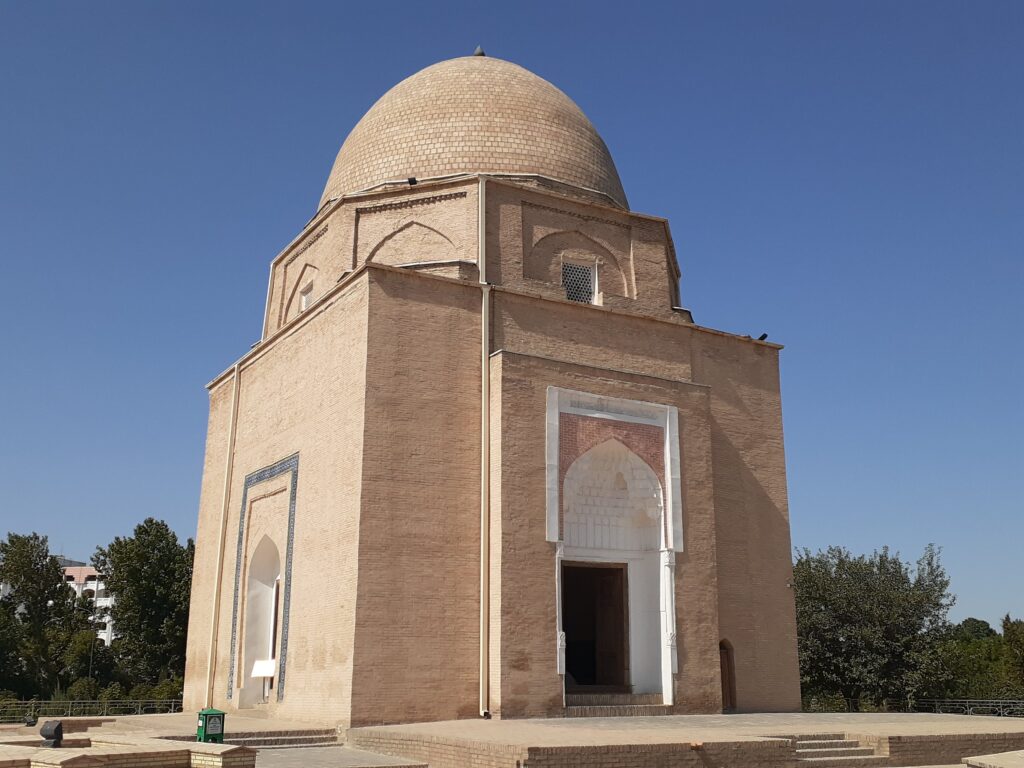
Built in 1380 on the orders of Amir Timur. It contains the tomb of Sheikh Burhaneddin Sagaraj, a highly respected Islamic theologian and mystic at the time.
It is an octahedron with arches on top of a cube, with a dome roof over it. It is a rather plain mausoleum with little or no decoration.
Aksaray Mausoleum
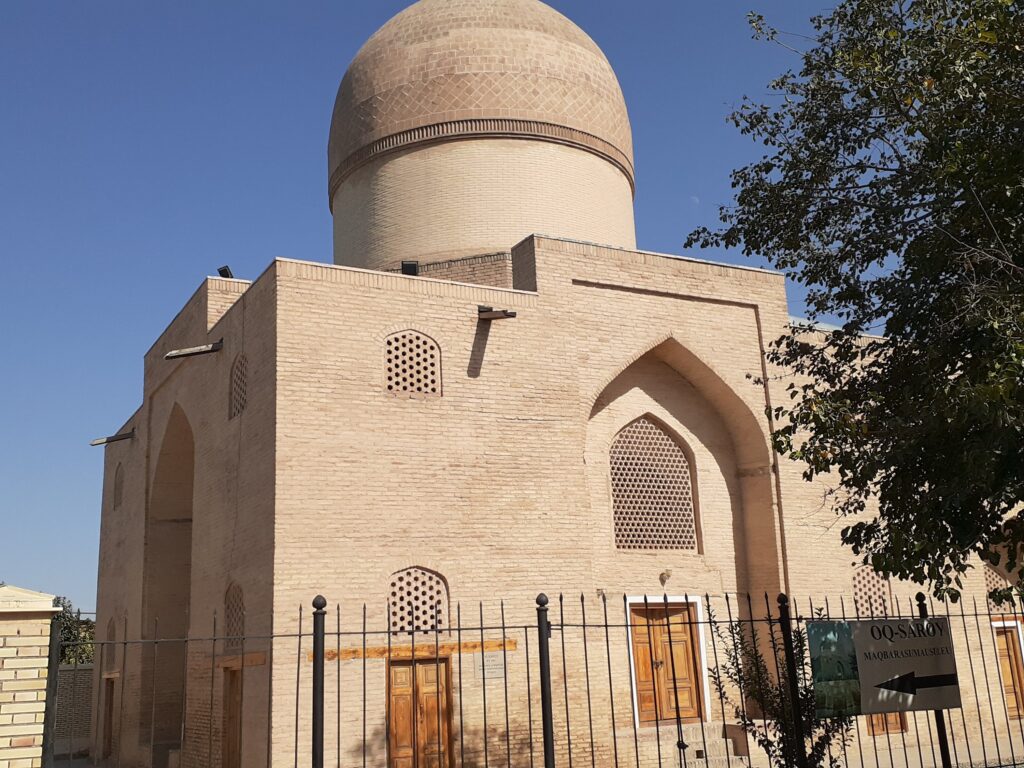
Built in the 15th century. Aksaray means ‘white palace’ in Turkic. It was locked when we visited and we were not allowed to go inside.
Bibi-Khanym Mosque
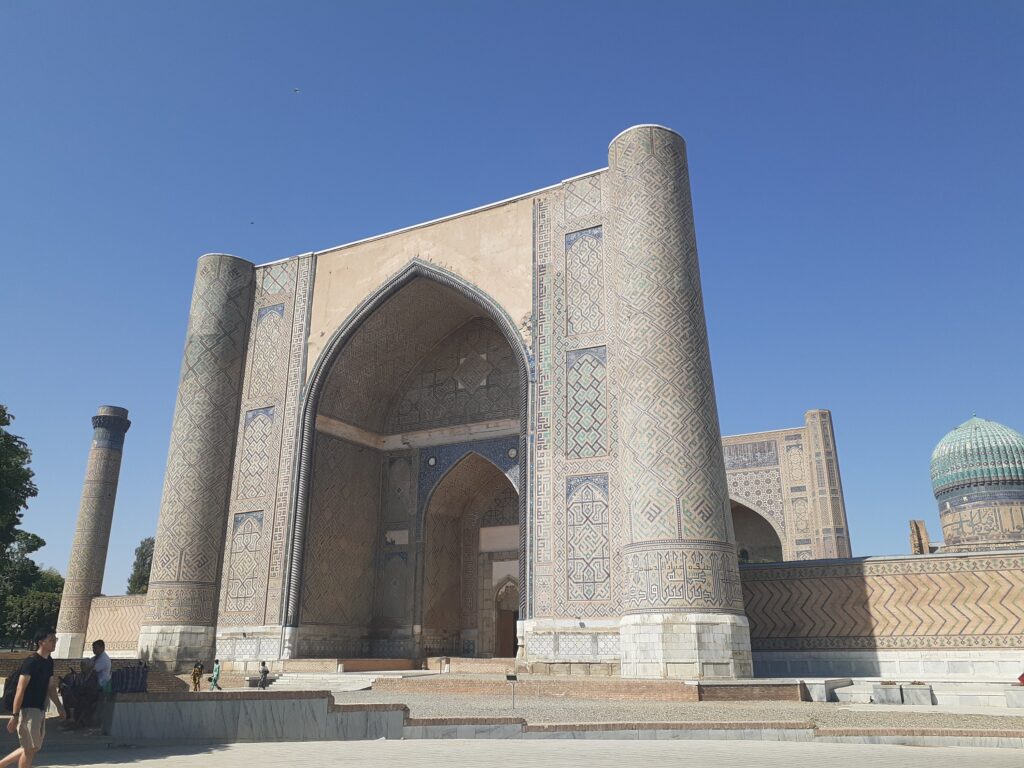
This mosque was built by Timur for his wife Bibi between 1399 and 1404. The completed mosque was the largest mosque in the Islamic world during the 15th century.
The view of this mosque from the Hazrat Hizr Mosque, described below, is also beautiful. The entrance fee is 30,000 som per foreigner.
Siyob bazaar (Siyob bozor)
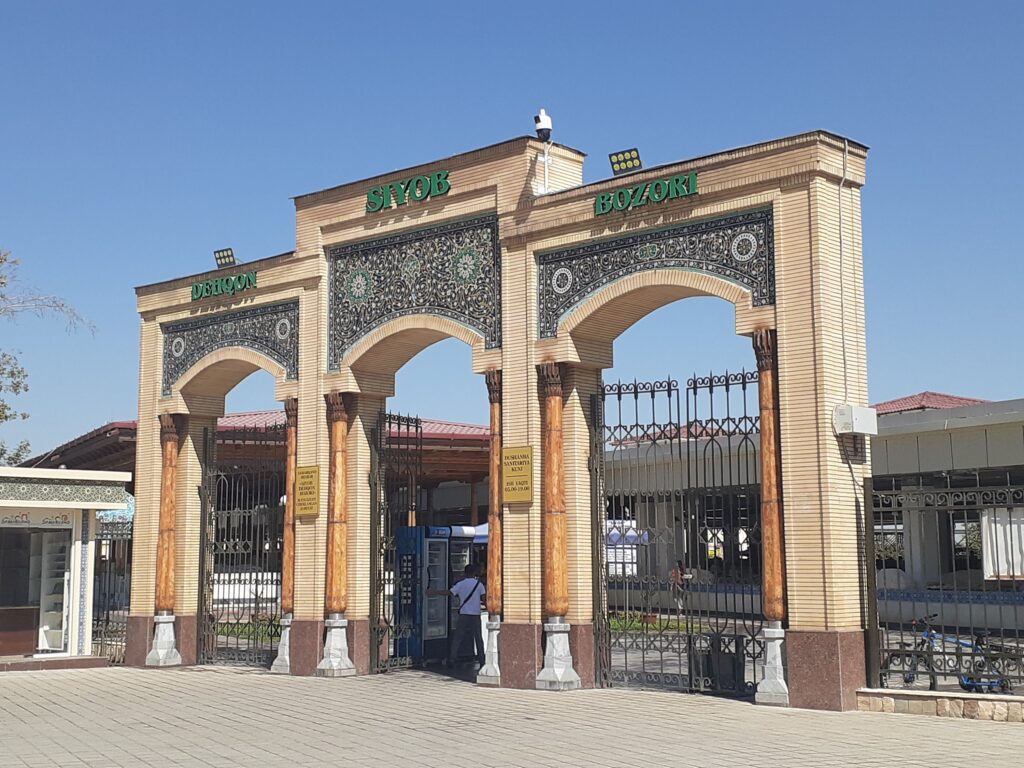
Located next to Bibi-Khanym Mosque, this is Samarkand’s largest market. It sells all kinds of food and daily necessities. There is also a restaurant inside, which was crowded with travellers.
Hazrat Khizr Mosque
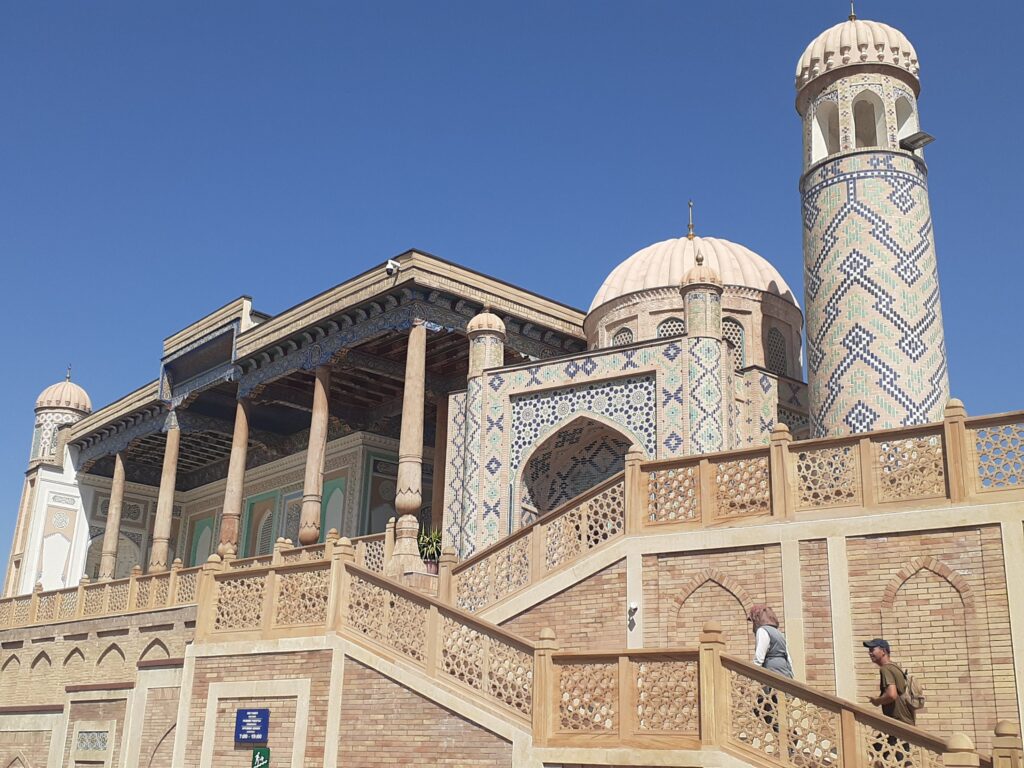
The first mosque built after the conquest of Samarkand by the Arabs in the 8th century, it was destroyed during the Mongol invasion in the 13th century but rebuilt in the late 19th century.
It is situated on a hilltop and offers views of Samarkand. Look down on the entire Bibi-Khanym mosque and reaffirm its beauty.
On 3 September 2016, Islam Karimov, the first President of Uzbekistan, was buried near this mosque.
Shah-i-Zinda Mausoleum complex
A complex of mausoleums and ceremonial buildings dating from the 11th-15th and 19th centuries, with a total of 20 facilities. Shah-i-Zinda means ‘living king’ and derives from an old legend.
Entry costs 40,000 som per foreigner and appropriate clothing is required. Sarongs and other items are available for hire at the entrance. This is a popular spot for tourists, so early morning is the best time to take photos. Officially it opens at 8am, but we went a little earlier and were able to get in. The video above was taken at that time.
Amir Temur Monument
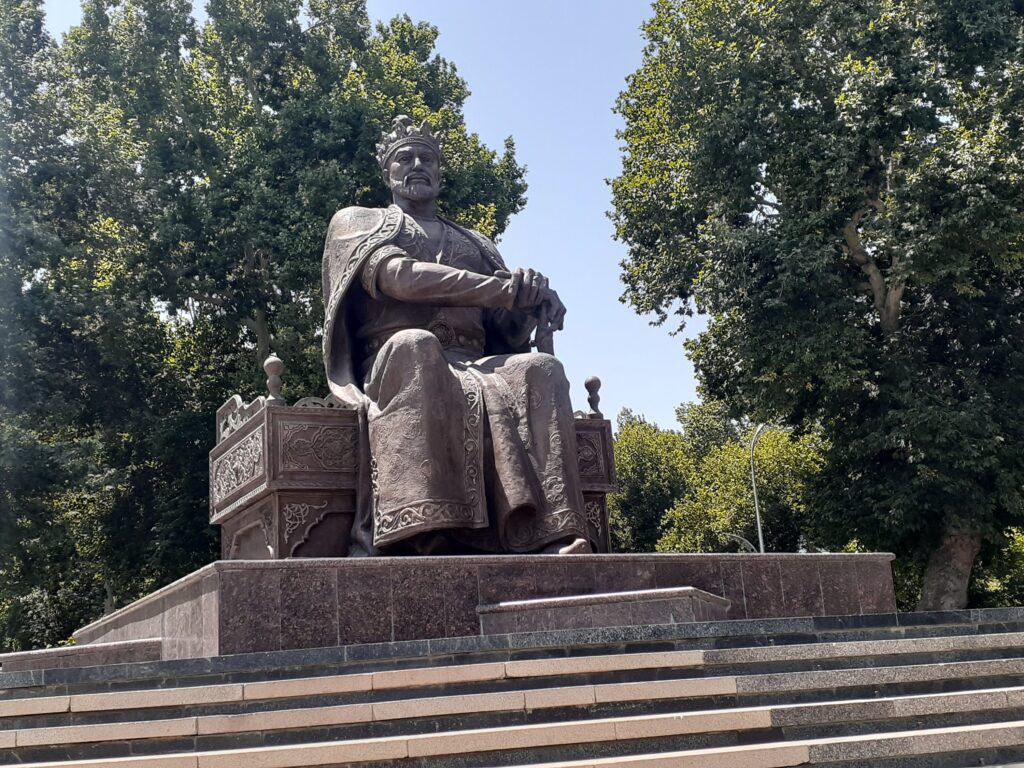
The statue of Amir Temur is located in the centre of a roundabout. A promenade extends behind the statue, allowing visitors to stroll through a green space planted with roadside trees and roses.
St. Alexsey church
Russian Orthodox church built in 1912. The roof is distinctive and beautiful. It is surprisingly spacious inside.
Roman Catholic Parish of St. John the Baptist

This is a Roman Catholic church. The exterior is old, but the inside is beautifully painted and looks brand new.
Armenian Apostolic Church
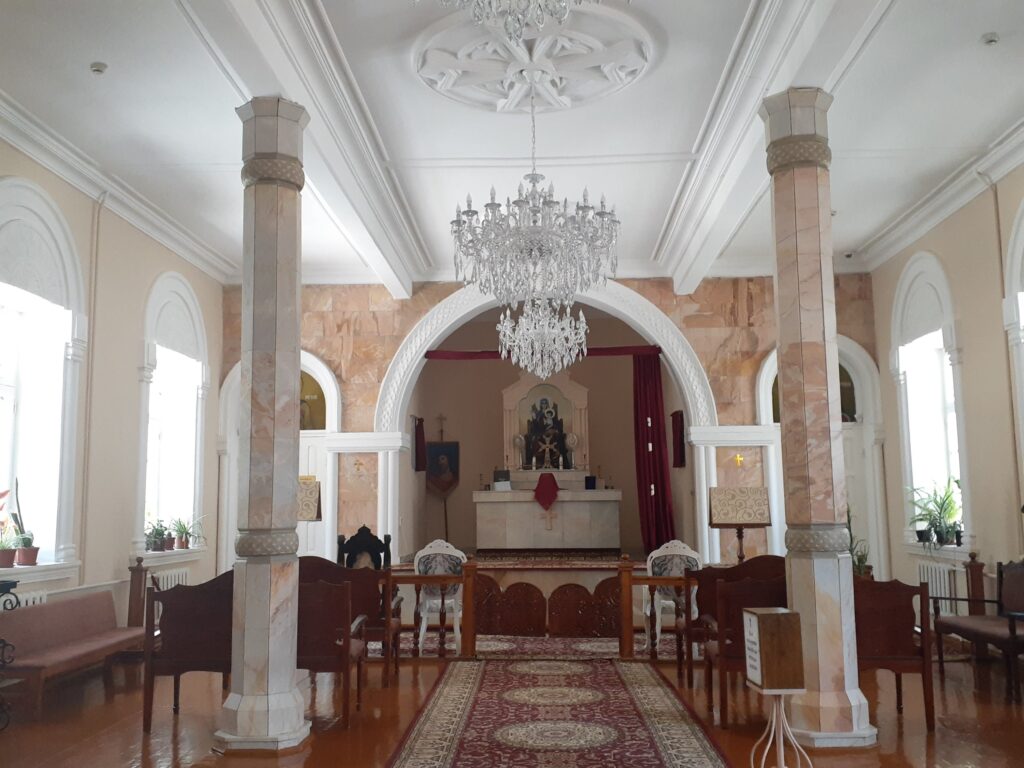
This is a small Armenian church, but the inside is beautiful, so please go in and have a look. The entrance is on the west side.
Accommodation in Samarkand
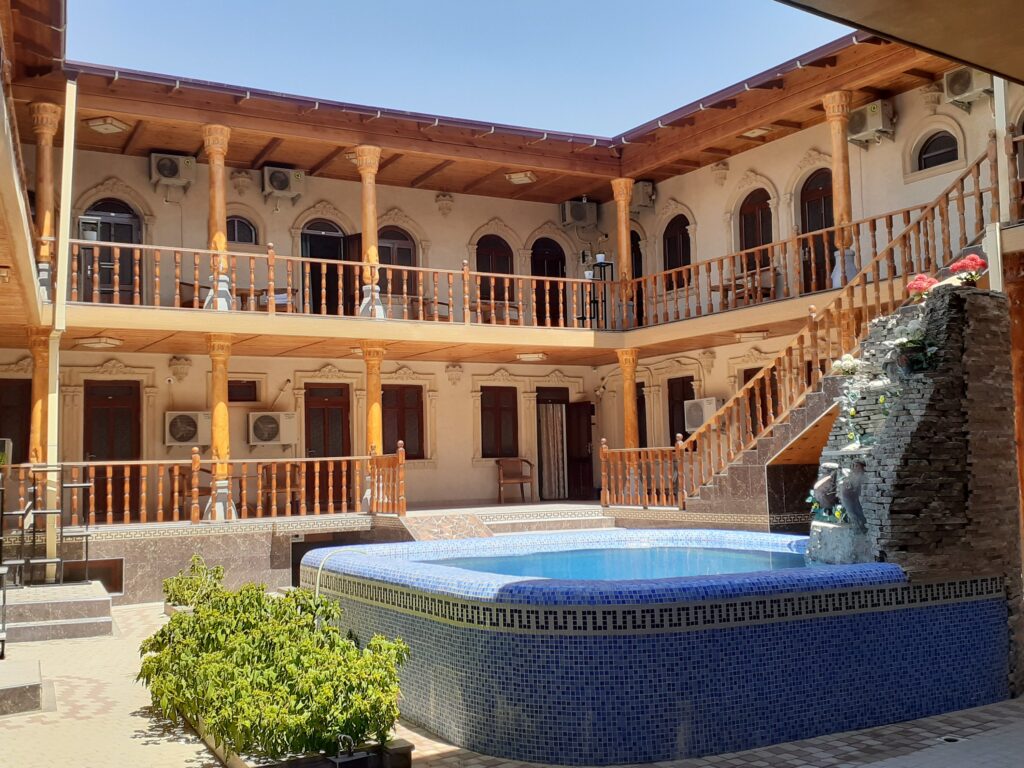
In Samarkand, we stayed at Hotel El Emir. The price was 300,000 Soms per night for a twin room, but we bargained it down to 250,000 Soms. The price includes registration and breakfast. The hotel is relatively new, having only been in operation for four years, and although it is a little far from the old town centre, it was a quiet and was a very enjoyable stay. A detailed review can be found on Google Maps.
Dining in Samarkand
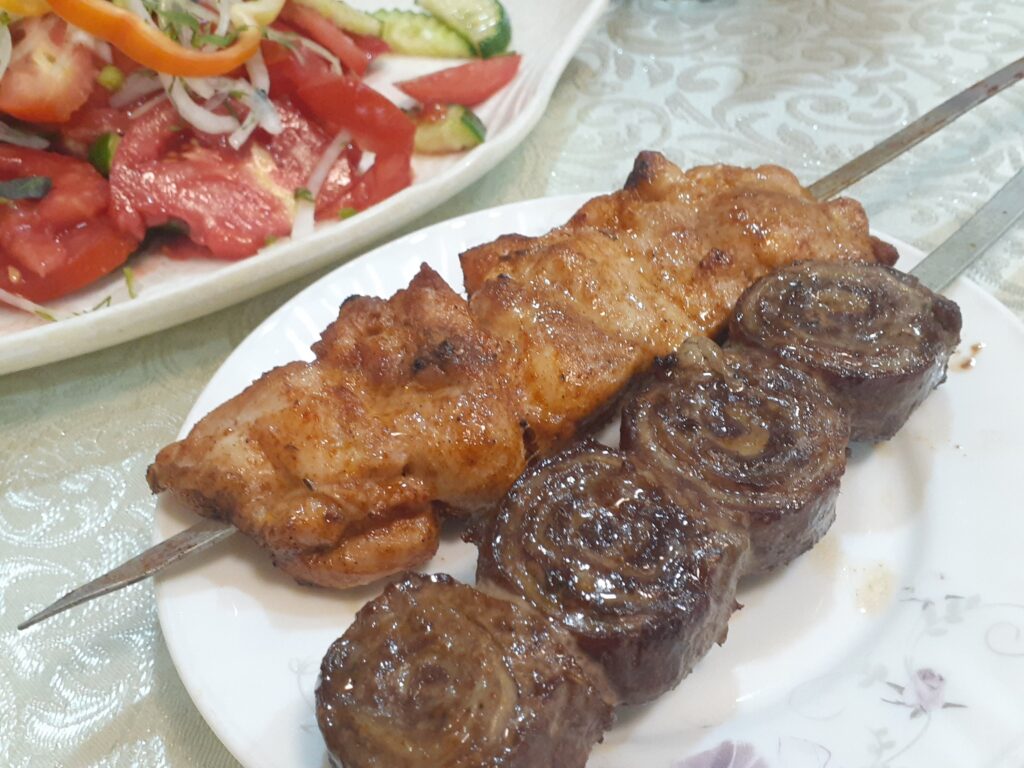
There are many restaurants in Samarkand’s Old Town. But the restaurants in the centre have menus and prices aimed at tourists, so we went to Mansur Shashlik, a little further away from the old town centre.
Shashlik is very good and reasonably priced. Beer and vodka are also available (not on the menu). Some of the staff speak English and we were liked it so much that we had dinner there two nights in a row. For a detailed review, see Google Maps.
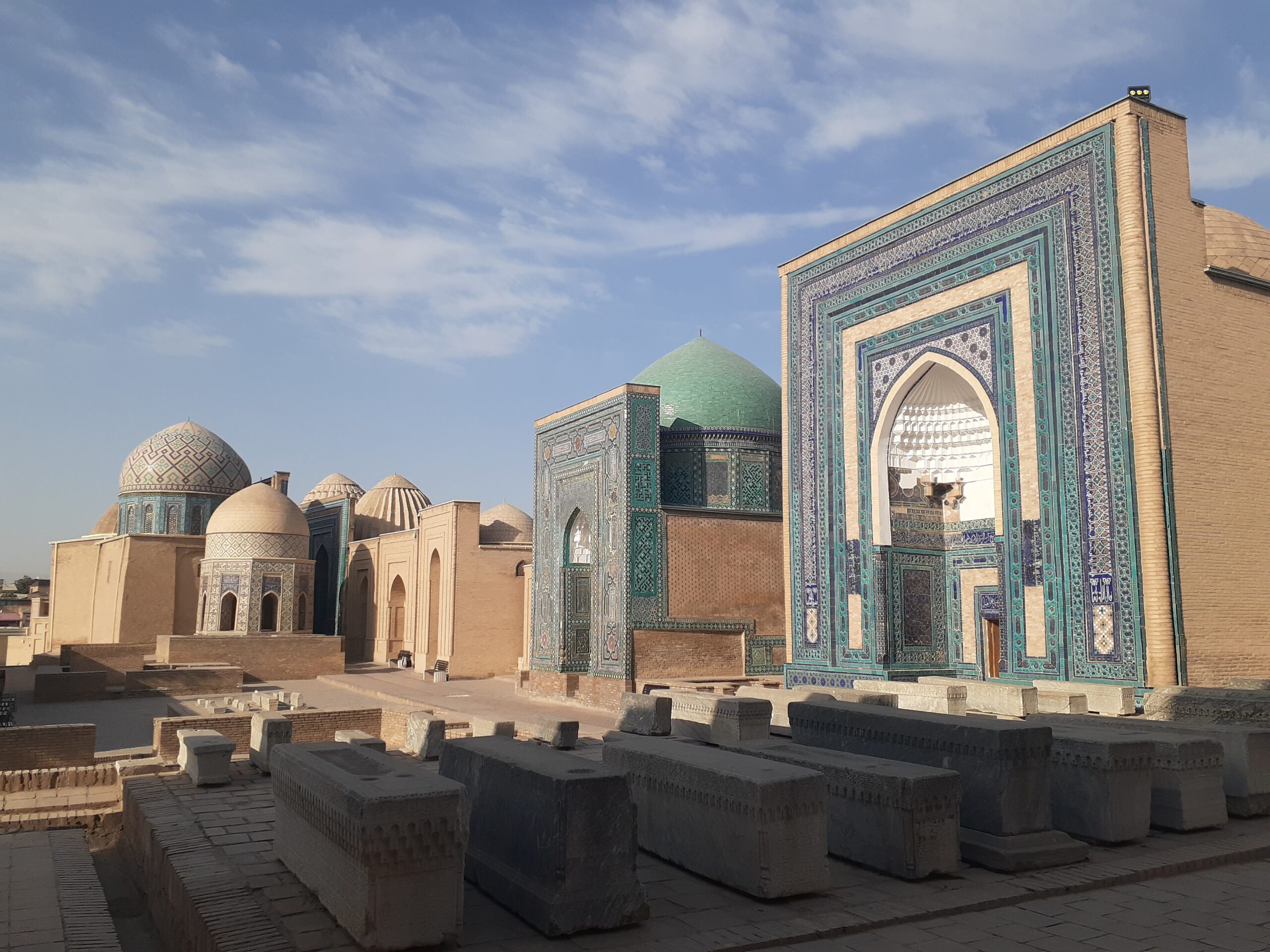


Comment